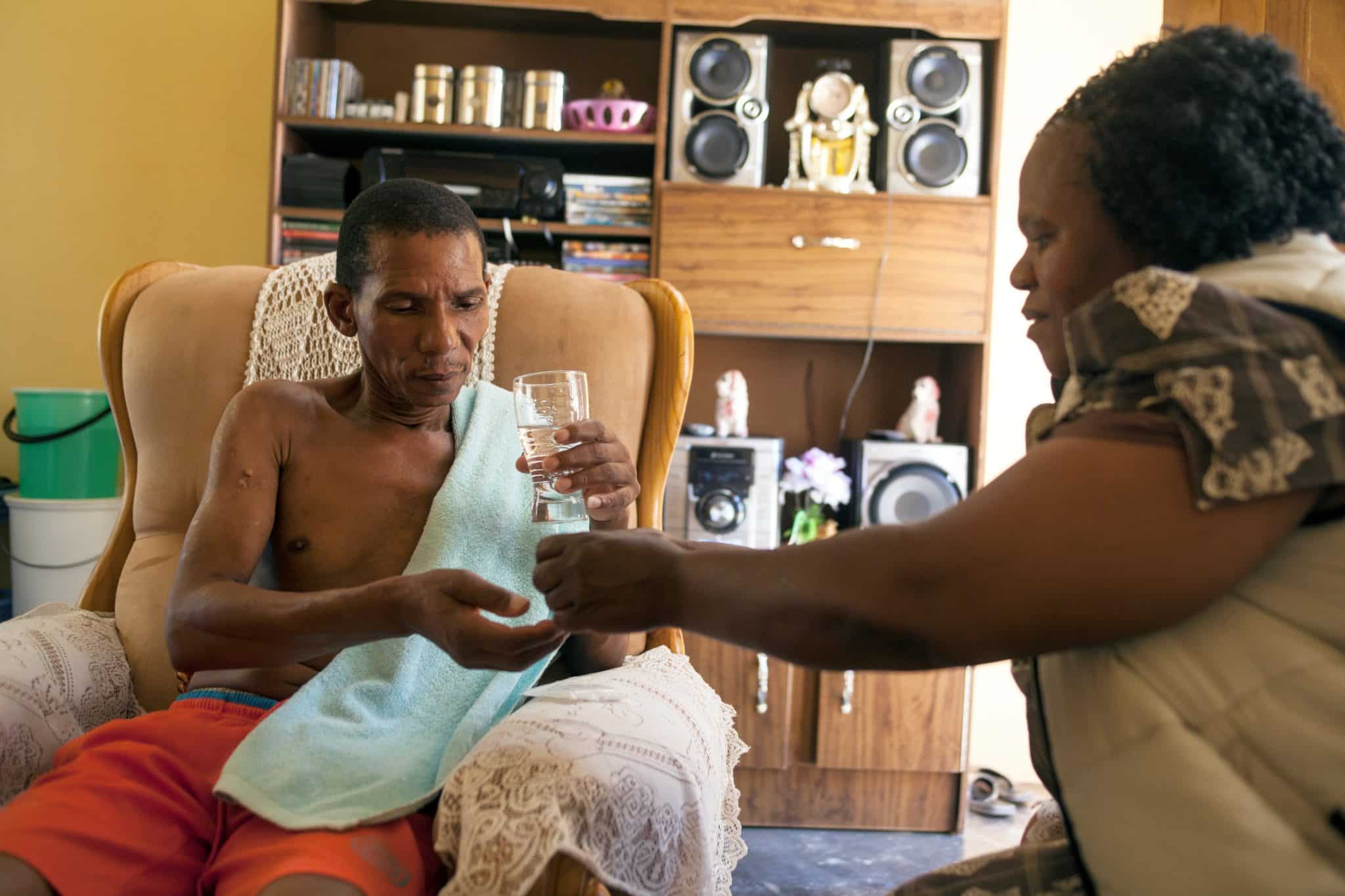In 2018, a study team from ICAP at Columbia University sought to learn more about risk for poor health outcomes for recipients of HIV care in sub-Saharan Africa. Analyzing data from Ethiopia, Kenya, Mozambique, and Tanzania, the study team found a great need for innovative differentiated service delivery (DSD) models for persons living with HIV who have advanced disease.
Chloe Teasdale, PhD, MPH, associate research scientist at ICAP and lead study author, discusses the study, which was published in the Journal of International Aids Society (JIAS) in December 2018.
How did this study come about and what did you find?
There’s a general assumption that people living with HIV who enter care with a CD4 count less than 200 cells/mm3—those categorized as having “advanced disease”—all have the same risk of poor health outcomes. We have access to a very large amount of routine medical record data from sites that ICAP supports in Ethiopia, Kenya, Mozambique, and Tanzania. We realized we could examine the assumption among a large group of patients by stratifying recipients of care according to their immunologic status (CD4 count) and examining their risk of loss to follow-up or death.
What we found is that there is a gradient of risk within this group, i.e. that with people with lowest CD4 counts appear to be at the highest risk for poor care outcomes. If you’re a person living with HIV and you enter a clinic with a CD4 count less than 50, you’re far more likely to be lost to follow-up or die than someone with a CD4 count in the 100-200 range.
How was the study conducted?
We looked at data for more than 305,000 patients, who we divided into four groups: those with a CD4 count less than 50, 50-100, 100-200, and 200 and above. We found that a CD4 count of 100 is the most sensitive cutoff for risk, despite 200 being the commonly accepted criteria for advanced disease and a previous AIDS-defining diagnostic criterion. In our analysis, individuals with a CD4 count between 100-200 had very similar risk profiles to those in the 200 and above group.
Recipients of care with fewer than 200 CD4 cells are not a monolith—there is a gradient of risk as immunologic status worsens.
What are the strengths and limitations of the data you analyzed?
This is a very large, representative data set, maybe the largest that researchers have ever used to explore this issue. The limitations are that it’s routine clinical data, not research data, so there are questions we can’t answer. For example, we have information about age and sex, but nothing on other demographic variables, or other factors that could impact outcomes, like ART adherence or co-morbidities like depression. Also, these are older data from 2005 to 2015. This was before Test and Treat, when there weren’t very many healthy people accessing the clinical sites. The focus of HIV treatment efforts has shifted to an earlier start, which has important health benefits, but what may be getting overlooked is that ART initiation at advanced disease is still a significant problem. Almost a third of all recipients of care continue to start ART at a CD4 count of less than 200, despite the Test and Treat approach and more aggressive testing campaigns.
How do your findings relate to DSD?
The study describes an overlooked group of recipients of care who could benefit from DSD. We wanted to get people thinking about making HIV services more available to those with advanced HIV disease. Most of the thinking in DSD has been around engaging healthier people and making ART and HIV care nimbler and more responsive to the needs of healthier patient groups who may be less interested in coming to health facilities. There is an assumption that this will free up time to better manage sicker patients, but it’s not clear that this is actually happening. And unfortunately, there has been less work done on how to meet needs of people who are already sick when they enter care and how to create DSD models tailored to them.
What are the challenges that need to be addressed considering these findings?
We need to immediately start people living with HIV who are unwell on ART and identify strategies to mitigate the high loss to follow-up we see among this group. This may take the form of ART in the community, home visits, or another solution. The other challenge is engaging men in care, something the HIV Coverage, Quality, and Impact Network (CQUIN) has been exploring in Zimbabwe and elsewhere. Men tend to have worse health outcomes in HIV programs. One of the important new findings from our analysis is that later entry into care doesn’t seem to explain the discrepancy in care outcomes between men and women. We observed poorer outcomes among men within each CD4 group regardless of how sick they were at the start of treatment. While it is true that we need to do much better at testing men and linking them to treatment, we also need to confront the fact that health care services may not be meeting the needs of men once they have engaged in care. Our results strongly suggest the need to identify innovative solutions to help men with advanced disease stay in care.
We found that men have worse health outcomes than women within each CD4 group—so it’s not just that they are starting treatment later.
What solutions could improve health outcomes for those with advanced disease?
It’s hard to find good evidence on DSD models specifically tailored for people with advanced disease. The package of services recommended for this group has evolved, but program design and differentiated models seem to be lagging. CQUIN actually published a Call to Action in 2017 to highlight this gap, and continues to urge programs to share lessons learned. Our guess is that there is innovation out there, but that it is not being studied or shared as much as it might be. Intensive follow-up schedules could work but could also discourage people from seeking care. Home-based care is a possible solution, or simply being able to access treatment at work, during the evening, and on the weekends. Our goal is to encourage people to think about these topics.
What do you hope comes from the study findings?
We hope it highlights a few key points. The first is that, as I mentioned, we are failing to reach people before their HIV progresses. It’s very concerning that nearly one third of those accessing ART are doing so when their CD4 count is below 200. We need to do better at finding people living with HIV and linking them to care. The second point is that we still aren’t seeing DSD models designed for people with advanced disease; this is another area that needs attention. And the third is that we need to do better at reaching and retaining men.
Learn more about CQUIN’s work on DSD for adults at high-risk of advanced HIV disease progression
ICAP Grand Rounds Webinar: Patients with Advanced HIV Disease



























